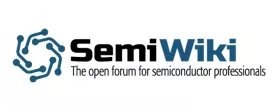Interface Protocols, USB3, HDMI, MIPI... the winner and losers in 2011
Releasing a new protocol like ThunderBolt, HDMI or SuperSpeed USB has not only to do with bandwidth performance or form factor of the connector as a guarantee of success. Some non-scientific parameters also play a role in the alchemy, that’s why forecasting the success of a certain protocol is such a hard task, and can’t be reduced to a feature list comparison table. That’s why, even if good marketing campaign can help (in fact is a necessary condition), properly marketing a technically attractive protocol is not sufficient to make it successful in the mass market. Do I know the magic recipe to cook an interface protocol generating high penetration in the mass market? I would be rich if I knew it! But I can try, at least, to understand which protocols are the winners in 2011, demonstrating high market penetration (and becoming “de facto” standard in certain market segments), or fast growing penetration (which is even more useful if you want to grow your business, developing around this protocol). Then, if we can identify winners, some losers should exist as well…
To read the full article, click here
Related Semiconductor IP
- HBM4 PHY IP
- Ultra-Low-Power LPDDR3/LPDDR2/DDR3L Combo Subsystem
- MIPI D-PHY and FPD-Link (LVDS) Combinational Transmitter for TSMC 22nm ULP
- HBM4 Controller IP
- IPSEC AES-256-GCM (Standalone IPsec)
Related Blogs
- Interface Protocols, USB3, PCI Express, MIPI, SATA... the winners and losers in 2012
- Interface Protocols, USB3, PCI Express, MIPI, DDRn... the winner and losers in 2013
- MIPI Protocols - Making Mobile Happen at MWC
- Interface IP Protocols: Status (2013), CAGR (2008/2013) & Forecast (to 2020)
Latest Blogs
- ReRAM in Automotive SoCs: When Every Nanosecond Counts
- AndeSentry – Andes’ Security Platform
- Formally verifying AVX2 rejection sampling for ML-KEM
- Integrating PQC into StrongSwan: ML-KEM integration for IPsec/IKEv2
- Breaking the Bandwidth Barrier: Enabling Celestial AI’s Photonic Fabric™ with Custom ESD IP on TSMC’s 5nm Platform
